Warsaw-based S&P Architektura Krajobrazu established by Miroslaw Sztuka in 2010 is a multiple award-winning Polish landscape bureau. Having graduated from the University of Greenwich, England, Miroslaw Sztuka has had varied experience working on projects spread across Poland, Germany, China, France, the UK, Egypt, Russia and UAE. He started as a landscape architect with RS Architektura Krajobrazu in Warsaw 27 years ago in 1994.
In the year 2004, Miroslaw’s rich experience as a creative landscape architect saw him becoming a Director at the Hong Kong office of EDAW / AECOM. Three years later in 2007, he was promoted as a Deputy Director, Director of Landscape Design at the Chinese office. Miroslaw Sztuka’s some of the prominent projects are ‘Vidny Quarter, Tyumen’ in Russia; ‘Palace Park’ and ‘The Constance Quarter’ in Warsaw; ‘Osmanthus City, Hangzhou’; ‘Tanggu Binhai New District, Tianjin’; ‘Dong Hai Garden, Beijing’; ‘Hyatt Peninsula, Hainan’; ‘Dong Hai Garden, Beijing’ all in China.
Miroslaw Sztuka speaks to Johnny D about his amazing journey and the ‘Forum City’ project in collaboration with Amsterdam-based LEVS Architecten.

When you look back at your childhood ambition, did you always wanted to be a landscape architect?
I made my first garden, when I was just 10. It was at my grandmother’s place, a small farm, in the middle of a pine forest. I used to spend most of my weekends there during summer. At this point, I decided to try and grow plants from seeds. However, grandma’s chickens ate all the seeds I planted. My father saw my interest in growing plants, so he built fence in a small area. It delighted me to watch flowers blooming. I presume I was destined to be attached with nature.
As I started growing plants, I read about them and studying to create a beautiful garden. It was an important element of trial and error methods, while learning a great deal about the Plants’ Kingdom. My first degree was in Horticulture. Later, I graduated as a Landscape Architect.

When the client states the brief to an architect in the first meeting, what really goes in an architect’s mind?
Every new project is an exciting moment. Of course, now it lacks the direct human interaction aspect, as many of our international clients and consultants communicate through internet. It is always exciting to analyze new places, understand them and client’s expectations. For the first few days, my mind often goes into an overdrive. I devour all the information that I can find related to the site, project and the client. I research a great deal to build a solid base for our design.
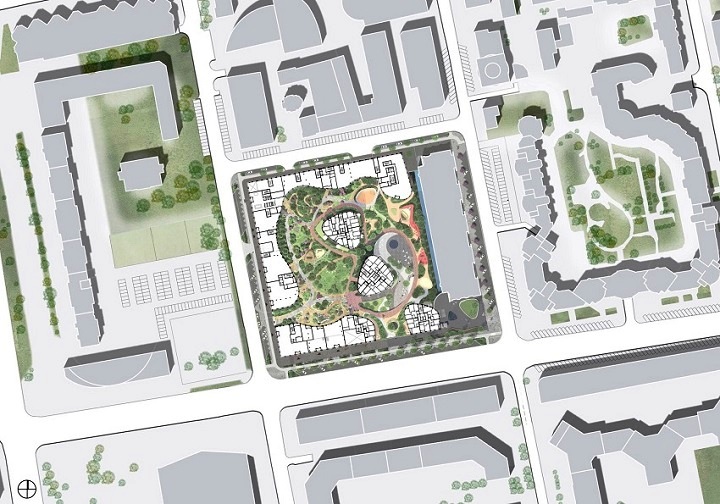
What was the brief of ‘Forum City’ landscape project?
Renowned Amsterdam-based LEVS Architecten and my firm have designed many interesting projects in the past. We have great understanding about our approaches toward a project. LEVS Architecten gave a very short brief – ‘we need design that will assure smooth, gradual transition between the public and semi-private spaces. We need to find physical landscape expression of an idea of a city- within-a-city, and simultaneously create an atmosphere of a quiet oasis within busy urban area’.

As the head, what do you expect from your team during the planning stage?
I always expect good team collaboration at every stage of a project. Nowadays, landscape projects are often so complex from the technical point of view, specific planning restrictions and norms that differ from country-to-country. We add to it complexities of communication with different clients. At the end, we are dealing with a complicated construction that one or two, even well-experienced landscape architects would have problem to manage. We can only be successful, if the project is tackled by a well-coordinated team of like-minded professionals, who not only understand their roles, but also watch each other’s back to strengthen the team as ONE.

What were the major challenges while designing landscape of the project on the real grounds?
First of all, such projects are always a great responsibility. Responsibility to meet the client’s expectations, match the construction budget, design buildable scheme and responsibility to a wider audiences – to design project that will be accepted by its users or a community, that will inhabit it and take care of it as their own. Last but not the least, responsibility for the future of the planet and the future generations is of utmost importance. The last one is slowly becoming the main responsibility of the landscape architects around the world. And it looks like, we as of all the construction industry creative professions might be the best-equipped to tackle this problem. So, to fulfil all these responsibilities is the main and biggest challenge. The biggest failure after all is the landscapes that are not used to its full potential.
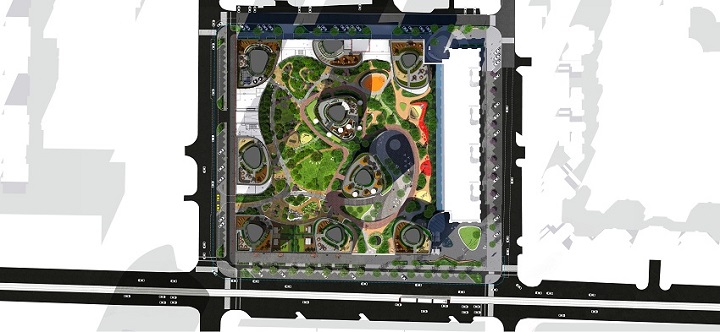
How did your team overcome them creatively?
We approach every project individually. We have regular brainstorming sessions. At times, one of our designers just brews on the subject for couple of days and comes with the first draft, which is always a hand scribble. I insist designers to first hand sketch the ideas. A hand-drawn line has a different dynamics than a CAD drawn. It creates different type of intimacy between the designer and the scheme. There are also projects, where the scheme moves between the designers. Sometimes, a designer may get tired and bored with a particular project. It happens and I suggest them to take a break. However, if the timeframe does not allow it, another designer(s) is handed to take over.

How would you describe the ‘Elegance of Design’ of the ‘Forum City’ project from a landscape architect’s perspective?
In ‘Forum City’, there is a certain unity between the flow of architecture, their curved inner façades and the landscape within it. In this type of projects, we are always half-a-step behind the architect. We responded to their volumes. The landscape we created is more like ripples started by scheme’s buildings. We found how to express the same energy within the project landscape. I think this unity gives this project, as you put it, certain ‘Elegance of Design’.

Please elucidate the use of flora in your projects and the reasons.
We give great thoughts to the plant material and planting schemes in all our projects. In fact, to me plants are the most important material that landscape architects use in their projects. My knowledge as a horticulturist has helped me with intimate knowledge of the plants’ kingdom. It has allowed me to make use of various ways to use particular plants to express emotions and beautify the landscape. We pride ourselves in successfully working in all climatic regions using specific planting materials as per the regions.
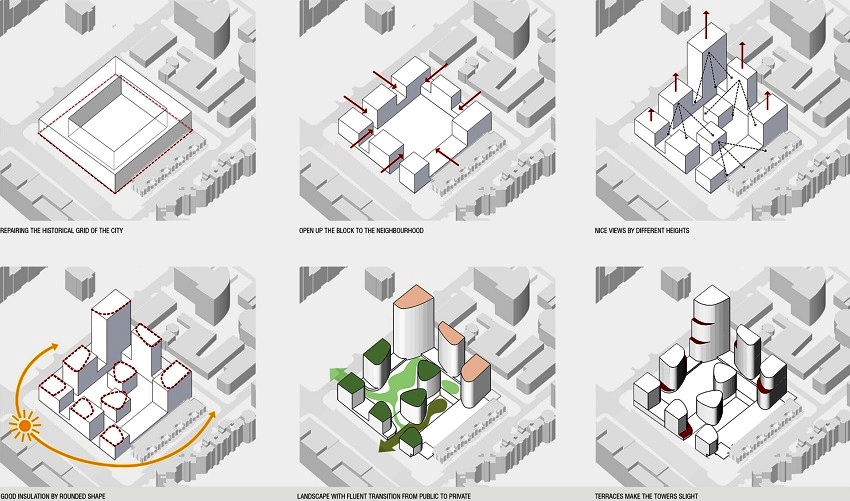
Our planting schemes are usually quite moody and whimsical. Honestly, we are not renowned for making bold and strong statements. We play subtly on a romantic aspect of the landscape, subliminal and subconscious way to influences the users. In this way, we are close to the great Geoffrey Jellicoe philosophy of design, or if you like English landscape tradition in general (smiles).
We also like to experiment in our projects with plan pallets. In ‘Forum city’, we planted red Maples, probably the first in this part of the world. From all planting experience and knowledge of the species, we were practically sure that it will thrive. We convinced our client and it worked. It gives a spectacular autumnal fiery red coloring to the scheme.

What are the ‘Sustainability’ features you have incorporated in the project? Please mention 5 of them and the reasons in brief.
First of all, it is a major intensive and extensive green roof scheme. It substantially mitigates the Heat Island Effect;
It also works as a major water buffer in case of sudden torrential rains. During the drought periods, respiration from planting improves the microclimate of the area;
The whole scheme was designed as a city-within-a-city, or 15 minutes neighborhood, saving on a car trips and promoting walking as a main way of transportation;
Communal gardens that took a form of a roof garden on each of the towers, because of the project density, have been introduced to help integrating the neighborhood. It also gives a semi-private areas for people to enjoy during lockdowns;
We also tried to minimize light pollution by using lighting that minimizes glares and use of undirected light beams.

How has the pandemic changed the process of working in the field of landscape architecture?
We all learned how to use ZOOM, Google Meet, Skype etc. Some clients also learned that they do not have to see us every second week. We gave more attention to staff communication with clients and other consultants. Verbal communication through the internet creates different dynamics than direct conversations. In the beginning, pandemic gave us some time to think again about what and how we do adapt to the new state of being. We had the chance to reassess our roles in the process of building communities and trying to make their future hopeful.
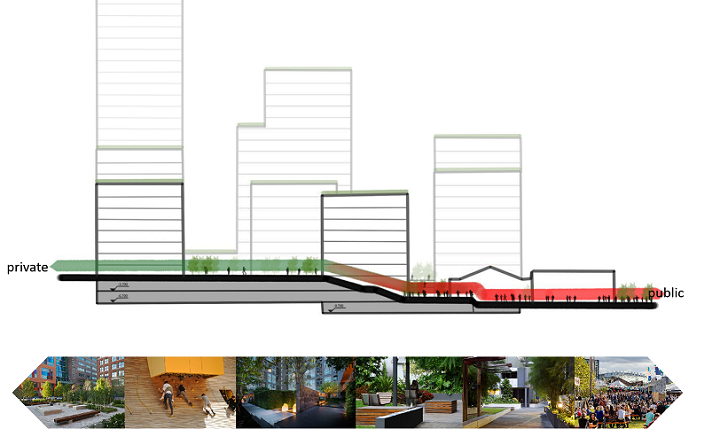
Climatic catastrophes have seen major smart cities around the world being destroyed in the recent times. How can or will architecture overcome such destruction to safeguard the community at large?
I am not sure, if architects are the best equipped to tackle the problem. The whole system of educating architects is to install in them the belief that they are masters of all. The position of a lead designer in many projects reinforces this believe in architectural profession. On the other hand, landscape architecture was always a profession in-between profession with blurred boundaries and shifting responsibilities. We often need to tidy all the loose ends left by others, in public realm or in left-over spaces not only in physical design terms, but also we need to be aware of different vested interests of various stakeholders.
We need to meet often contradictory needs of the client, future users, city administration etc. As a result, many of us have a long practice of juggling various aspects that influence our project. It reminds me very much the complexity and dynamic nature of the issues that we need to deal with as a result of climatic catastrophe. Although, not all of us but some in landscape profession knows how the nature works and how we can use its processes to mitigate the damage we inflict. I believe that in many smart cities, the overwhelming reliance on technology and hard solutions and ignoring naturally accruing dynamic regulations could have led to their failure.

What are the various projects you are currently busy with, in various cities and countries?
Our two offices are working on 25 different projects, which are at different stages of completion. Our works consist of housing projects of various scales, from master planning hundreds of hectares of new city districts, to designing small courtyard for an inner city block. This is our bread and butter. We are currently working on couple of landscape urban strategies for medium size cities and city like Ekaterinburg, Capital of Sverdlovsk region in Russia. Our Russian office is also located in Ekaterinburg.
We have an interesting project in Warsaw, where we are again testing our ideas of urban biotope formation. We would like to use architecture as a frame for nature to colonize it, where if you like, we as landscape architect would be editing natural succession and not controlling it. S&P is reasonably busy as we are trying to expand into new geographies like the Middle East and maybe return to China, where we have worked before.
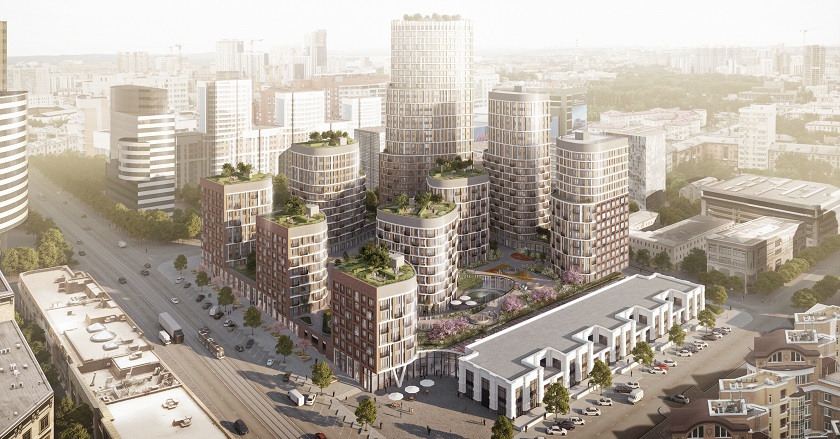
How would you describe Miroslaw Sztuka as a professional and a person?
As a professional, I am focused, not driven as much as I used to be, but still emotional more than before. As a person, I am much calmer nowadays, but also very impatient with people. I am still living in my own world as a professional. I try to realize in my projects and am always in need of occasional solitude.
Describe the emotions of winning an award on an international platform.
It is extremely gratifying! It has also always connected with some disbelieve in my case because somewhere deep inside me, I am still that 10-year-young boy trying to protect the seeds from being eaten by grandma’s chickens (smiles). So from this perspective, it is always surprising that someone noticed our team effort internationally.

Please list five recent awards won with the name of the projects.
European Property Award 2020-2021: Winner “Residential High Rise Development” – The residential complex ‘Capitals Park’, Ekaterinburg, Russia;
100+ Awards 2021 – Russian Oscars of Engineering and Architecture 2021: Best Architectural Solution – Residential complex ‘Forum City’, Ekaterinburg, Russia;
2020 Golden Trezzini Awards for Architecture and Design Finalist ‘Diploma for the Best Implemented Landscaping and Green Beautification Project – ‘Forum City’, Ekaterinburg, Russia;
XI Russian National Landscape Architecture Award 2020: ‘Diploma for the Best Unrealized Public Space with an area of more than 5 ha – ‘Ural Forest’ – comprehensive improvement of public space near the Ice Arena in Ekaterinburg;
IX Russian National Landscape Architecture Award 2018: ‘Golden Diploma for the best realized public space with an area of more than 1 ha – the Landscape design of the urban area ‘Boulevard Ribbon’ in preparation for the 2018 World Cup, Ekaterinburg.
Image Courtesy: S&P Architektura Krajobrazu and LEVS Architecten